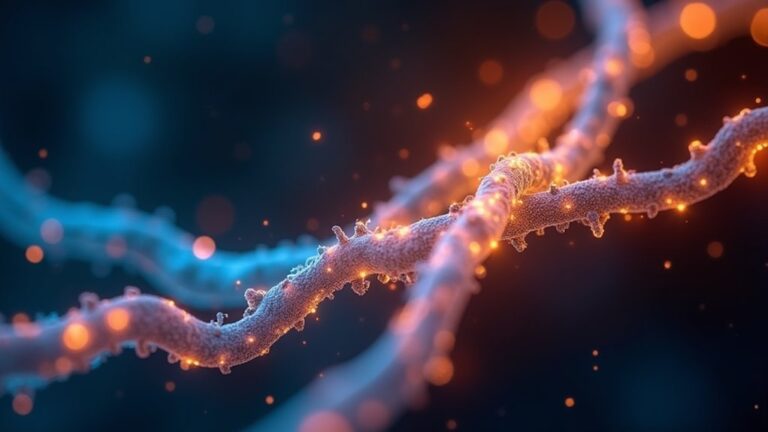Substance use disorders impact millions, but what precisely qualifies as addiction? The DSM-5 offers clear guidelines, listing specific symptoms like cravings, tolerance, and withdrawal that signal a deeper issue. Not everyone who consumes or utilizes substances develops a disorder, but when use starts harming work, relationships, or health, it may meet diagnostic criteria. Comprehending these signs can assist in recognizing problems at the outset—and knowing the options makes seeking assistance a little less intimidating. So how does it all come together?
What Are Substance Use Disorders?
While many people use substances like alcohol or cannabis without major issues, some develop patterns that spiral into serious problems. Substance use disorders, as defined by the *Diagnostic and Statistical Manual* (DSM-5), involve persistent substance use despite harmful consequences.
These disorders affect mental health and daily functioning, ranging from mild to severe substance use disorder. The brain’s reward system plays a key role, making it harder to stop even when problems arise. Factors like genetics, environment, and self-control influence vulnerability.
Treatment options vary based on intensity, from therapy to medication. Recognizing these disorders promptly helps prevent long-term damage. Comprehending the difference between casual use and harmful patterns is pivotal for seeking timely help. Support and professional care can lead to recovery.
DSM-5 Criteria for Substance Use Disorder
How does someone know whether their substance use has crossed into dangerous territory? The DSM-5 Criteria outline key symptoms to identify a substance use disorder. These include using more of a substance than intended, struggling to curtail, or spending excessive time obtaining or recovering from it.
Cravings become overwhelming, and tolerance develops, meaning larger amounts are needed for the same effect. Withdrawal symptoms appear when use stops, and daily responsibilities might be neglected. The DSM-5 groups these signs into a spectrum—mild, moderate, or severe—based on how many criteria apply.
Recognizing these patterns helps distinguish casual use from a disorder needing attention. Whereas the criteria are clinical, they reflect real struggles many face, offering a path to comprehension and recovery.
Social and Occupational Problems From Substance Use
Substance use can quietly chip away at a person’s daily life, making it harder to keep up with work, school, or relationships. Whenever substance misuse escalates, it often leads to social problems, like strained friendships or family conflicts, as the person prioritizes substance use over meaningful connections.
Occupational problems also emerge, with missed deadlines, poor performance, or even job loss due to substance dependence. Repeated substance abuse can disrupt responsibilities at home, like neglecting chores or childcare. Some might abandon hobbies or social events they once enjoyed, further isolating themselves.
Using substances in risky situations, such as driving under the influence, adds another layer of danger. These patterns signal a deeper issue—substance use disorder—where the need for the substance overrides everything else, eroding stability over time.
Levels of Severity for Substance Use Disorder
The DSM-5 classifies substance use disorder severity based on the number of symptoms present, helping professionals understand the intensity of the condition. Mild cases involve two to three criteria, moderate cases include four to five, and six or more indicate a severe disorder requiring more intensive care.
Recognizing these levels guides appropriate treatment plans tailored to an individual’s needs.
Symptoms Severity Classification
When someone meets two or three of the DSM-5 criteria for substance use disorder, it’s classified as mild—a sign that challenges are present but might not yet be overwhelming. Meeting four or five criteria indicates moderate severity, where symptoms indicate more significant mental and physical strain. Six or more criteria indicate a severe disorder, often requiring intensive support.
| Severity Level | Number of Criteria Met |
|---|---|
| Mild | 2–3 |
| Moderate | 4–5 |
| Severe | 6+ |
Understanding severity helps determine the right support. Even mild cases deserve attention before escalating. Severe cases often involve deeper struggles, so initial recognition matters. These classifications guide professionals in evaluating risk and providing appropriate care.
Treatment Approach Guidance
Recognizing the severity of a substance use disorder is just the initial step—what comes next shapes recovery. The DSM-5 Criteria for Substance Use Disorder helps guide treatment by classifying severity.
If someone shows two or three symptoms, they have a mild disorder, often managed with brief interventions or outpatient care. Four or five symptoms indicate a moderate disorder, possibly requiring structured therapy or support groups. A severe substance use disorder, marked by six or more symptoms, typically needs intensive treatment like inpatient programs or long-term counseling.
Timely intervention matters—even one symptom signals risk, and addressing it promptly can prevent escalation. Tailoring care to the individual’s needs improves outcomes, whether they’re at mild, moderate, or severe stages. Comprehending these levels ensures the right support is given.
Substance-Use vs. Substance-Induced Disorders
Because substance-related issues can affect people in different ways, grasping the difference between substance-use disorders and substance-induced disorders is key to getting the right help. A substance use disorder involves ongoing patterns of use despite negative consequences, with criteria for substance use including cravings, loss of control, and failure to meet responsibilities. The symptoms indicate a compulsive need for the substance.
In contrast, substance-induced disorders stem directly from the substance’s effects—like intoxication or withdrawal—and often resolve once the substance is out of the system. Healthcare professionals must distinguish between the two for proper treatment and recovery. Misdiagnosis can delay healing, so recognizing whether issues arise from long-term dependency or temporary substance effects verifies tailored care. Comprehending these differences helps individuals receive the best support.
Substance/Medication-Induced Mental Disorders
Substance/medication-induced mental disorders include a range of conditions like psychotic, depressive, and anxiety disorders triggered by substance use or withdrawal. Symptoms vary widely, from delusions in psychotic disorders to mood swings in bipolar-related conditions, requiring careful clinical assessment for diagnosis.
Effective treatment involves addressing both the foundational substance use and the specific mental health symptoms through tailored approaches.
Types of Induced Disorders
As medications or substances interfere with brain chemistry, they can trigger mental health conditions that mimic disorders like depression, anxiety, or psychosis. Substance intoxication or withdrawal might worsen an existing psychological problem or create new symptoms, leading to substance-induced mental disorders.
These include psychotic, bipolar, depressive, or anxiety disorders caused by drug effects. For example, alcohol withdrawal can cause severe delirium, while stimulants could induce paranoia. Physical dependence, seen in opioid or benzodiazepine use, often complicates withdrawal, making medical supervision critical.
Even short-term use can lead to substance use disorder, with withdrawal symptoms ranging from mild discomfort to life-threatening complications. Recognizing these distinctions helps separate temporary substance-related effects from primary mental disorders, ensuring proper treatment.
Symptoms and Diagnosis
Whenever substances alter brain function, they can create mental health symptoms that closely resemble disorders like psychosis, depression, or anxiety. The manifestations vary based on the substance, timing, and intensity of use.
For example, hallucinations or delusions might signal a substance-induced psychotic disorder, while mood swings could point to a bipolar-like condition. Identification requires ruling out primary mental health issues by confirming symptoms began during or shortly after substance use or withdrawal. Doctors assess whether the substance use disorder directly caused the symptoms, which often fade with abstinence.
However, some cases persist, complicating care plans. Accurate identification is indispensable, as misdiagnosis can lead to ineffective care. Comprehending these distinctions helps tailor interventions for better outcomes.
Treatment and Management
How can someone recover as substance use triggers mental health symptoms? Treatment begins with addressing the substance use disorder, whether mild, moderate, or severe, to reduce withdrawal symptoms and stabilize mental health.
For mild cases, therapy and support groups could suffice, while moderate to severe cases often require medical supervision to manage risks like dangerous withdrawal. Detoxification under professional care guarantees safety, especially with substances like alcohol or opioids. Medications may alleviate cravings or treat co-occurring mental health issues. Behavioral therapies, such as cognitive-behavioral therapy, help individuals understand triggers and build coping skills.
Long-term recovery involves ongoing support, lifestyle changes, and sometimes medication-assisted treatment. Early intervention improves outcomes, so seeking help at the first signs of trouble is vital. Personalized care plans ensure the best chance for lasting recovery.
Intoxication and Withdrawal Symptoms
Substance intoxication and withdrawal create a challenging cycle that affects both the body and mind. During substance use, intoxication symptoms indicate the immediate effects, such as euphoria, slurred speech, or impaired coordination. Whenever using substance stops, withdrawal symptoms emerge—ranging from anxiety and nausea to severe complications like seizures.
These reactions often drive continued substance use, worsening substance use disorder. Medical professionals highlight the risks, as withdrawal from alcohol or benzodiazepines can be life-threatening without proper care. Even brief opioid use might lead to discomfort during withdrawal. The severity varies based on the substance and individual factors, making professional support critical. Comprehension of these patterns helps recognize the need for intervention and reinforces the significance of supervised detoxification.
Diagnosing Substance Use Disorders
Diagnosing substance use disorders involves carefully evaluating patterns of behavior, health impacts, and daily life disruptions. The DSM-5 outlines eleven criteria to identify these disorders, focusing on how substance use affects a person’s life.
Behavioral Signs: Using larger amounts or for longer periods, unsuccessful attempts to quit, and spending excessive time obtaining or using the substance.
Health and Social Impact: Neglecting responsibilities, continued use despite physical or mental health problems, and giving up meaningful activities.
Severity Levels: Meeting 2–3 criteria indicates a mild disorder, 4–5 a moderate one, and 6+ a severe substance use disorder.
These symptoms help professionals determine the right level of care needed, ensuring support matches the individual’s struggles. Timely recognition can lead to better results.
Treatment Options for Substance Use Disorders
Once a substance use disorder is identified, the next step involves exploring effective ways to address it. Treatment depends on the severity of symptoms and individual needs.
Medical detoxification helps manage withdrawal safely under supervision. Behavioral therapies, like cognitive-behavioral therapy, teach coping skills to reduce relapse risk. Medication-assisted treatment combines medications (e.g., methadone or buprenorphine) with therapy to ease cravings and stabilize brain chemistry. Support groups and aftercare, such as 12-step programs, offer long-term encouragement.
A tailored plan often works best—some need inpatient care, while others benefit from outpatient programs. Prompt intervention improves results, emphasizing the importance of seeking help. With the right support, recovery is possible, though progress may fluctuate by person. Consistency and professional guidance are key.
Conclusion
The DSM-5 criteria clarify the moment substance use becomes a disorder, guiding diagnosis and care. Recognizing symptoms promptly helps prevent escalation, while familiarity with severity levels tailors treatment. Withdrawal and cravings signal deeper struggles, yet recovery is possible with the appropriate support. Clinicians assess, treat, and empower—offering hope to those affected. Whether mild or severe, help exists, and healing begins with consciousness. No one walks this path alone.





